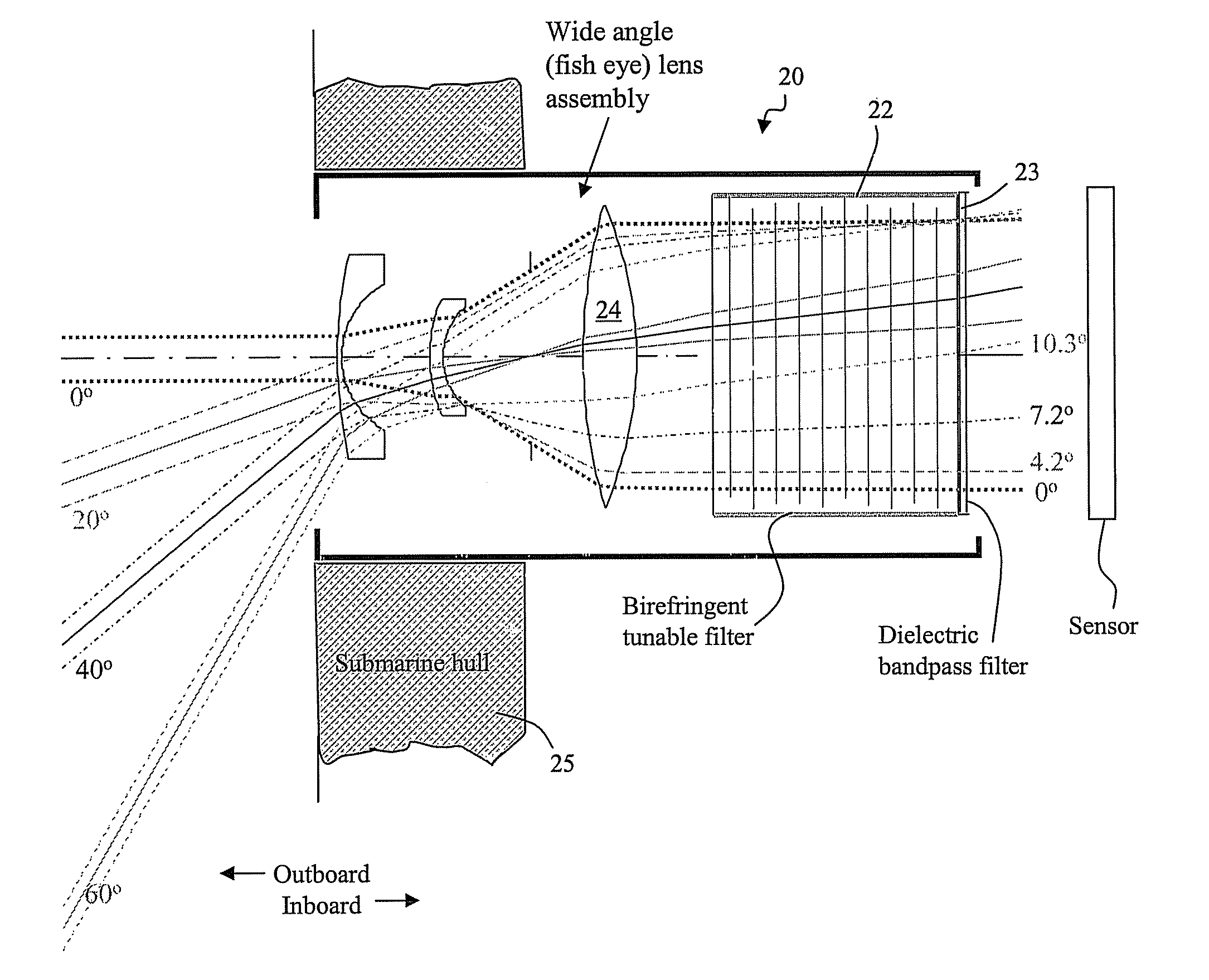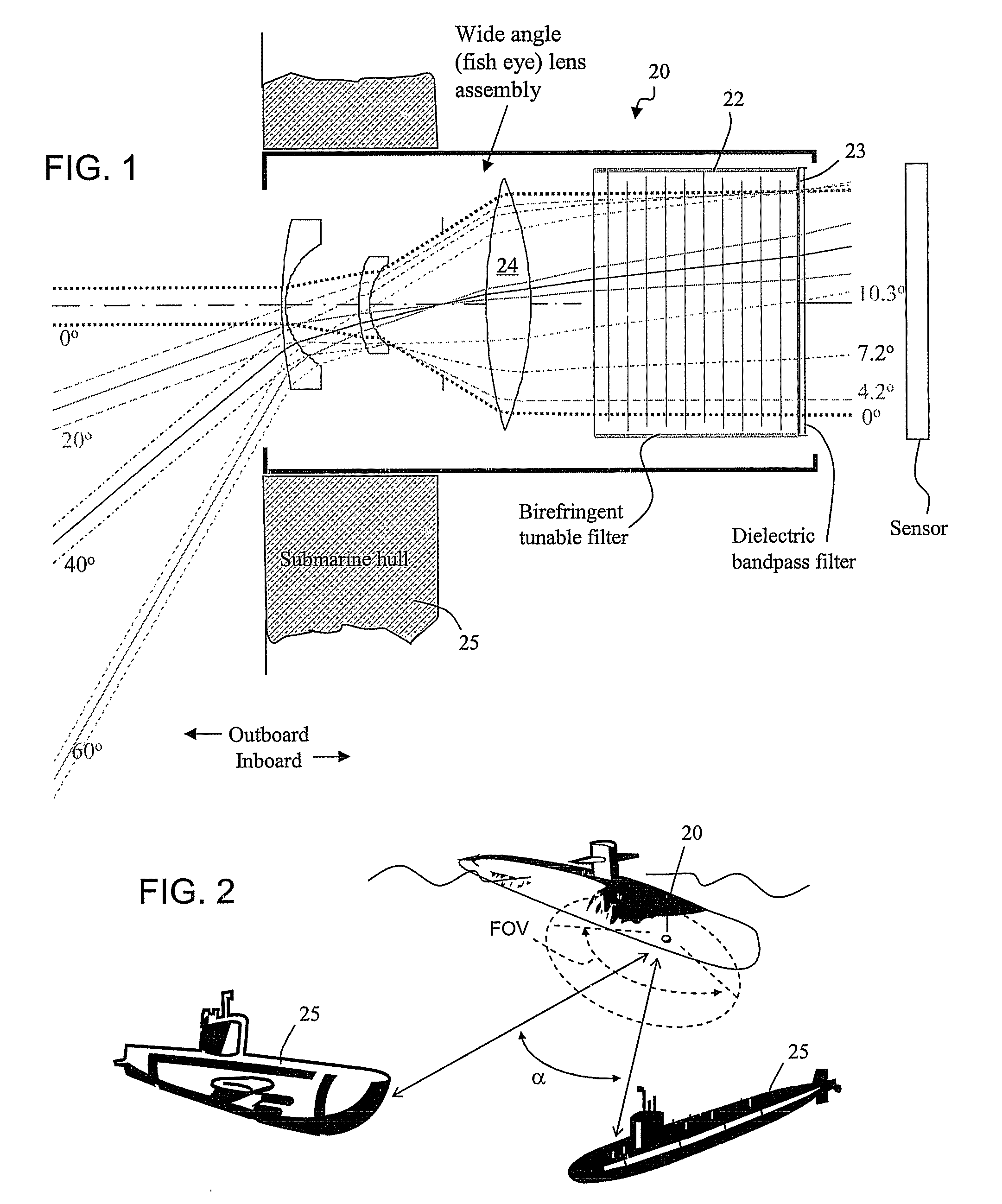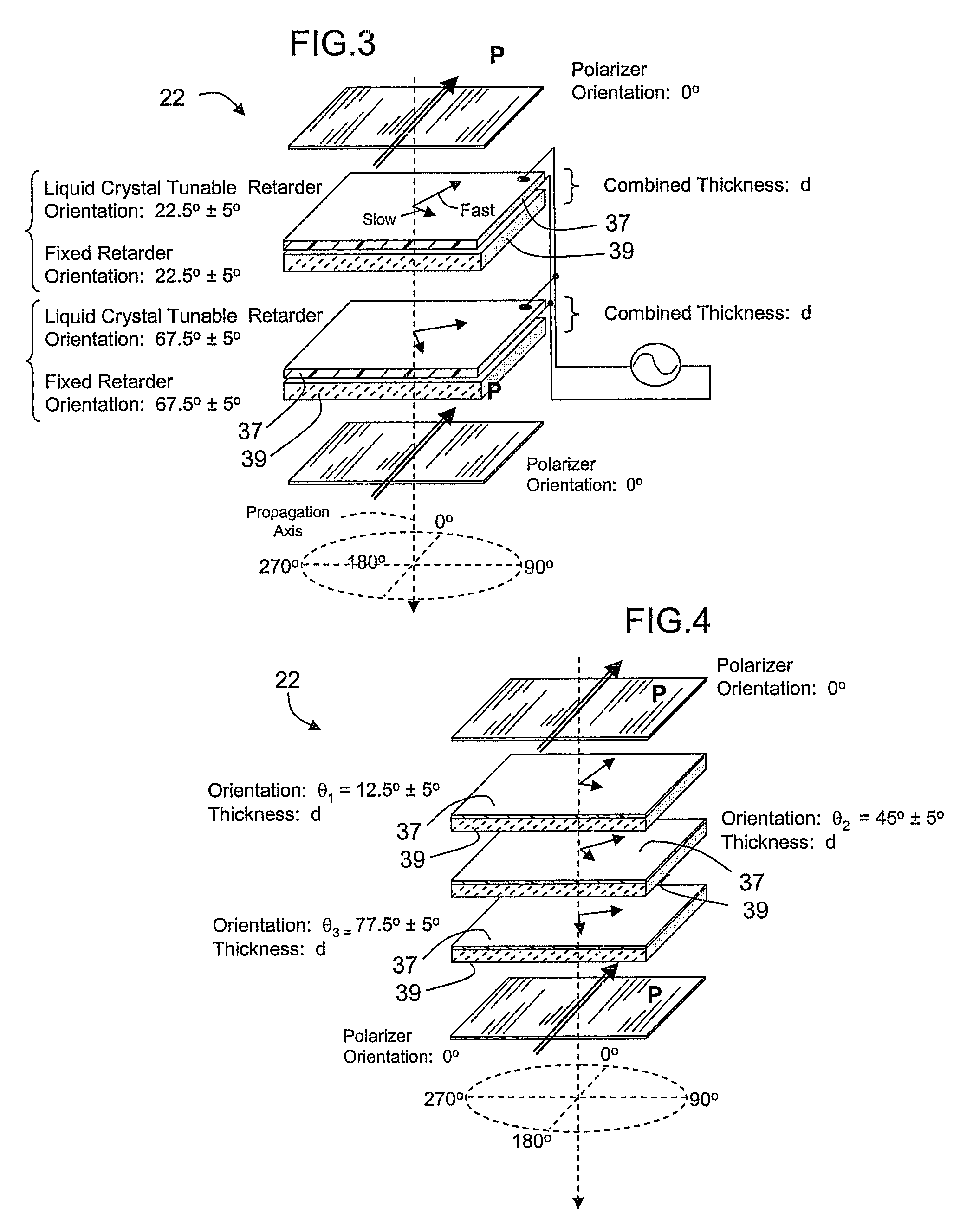Birefringent spectral filter with wide field of view and associated communications method and apparatus
a spectral filter and wide field of view technology, applied in the field of optical wavelength filters, can solve the problems of complication, more complicated geometry, and differential retardation, and achieve the effects of maximizing the bandpass amplitude, high transmission ratio, and maximizing the level of signal obtained
- Summary
- Abstract
- Description
- Claims
- Application Information
AI Technical Summary
Benefits of technology
Problems solved by technology
Method used
Image
Examples
Embodiment Construction
[0048] An optical receiver comprising a birefringence optical filter is disclosed herein, having a relatively wide field of view angle and a spectral filter apt for operation at short blue and green wavelengths, preferably capable of efficiently switching between operation at different short wavelengths. The spectral filter can comprise a set of birefringent differential retarder plates, preferably in cascaded stages. The retarders in a stage are arranged at particular rotational angles relative to one another and relative to at least one associated polarizer to produce a periodic comb filter transfer function. The transfer functions of stages in cascade are superimposed. In this respect, the subject matter can incorporate filter configuration aspects of U.S. Pat. No. 6,992,809 and pending application Ser. No. 11 / 537,233, filed Sep. 29, 2006, the disclosures of which are hereby incorporated into this description, in their entireties.
[0049] The disclosed receiver includes a spectral...
PUM
 Login to View More
Login to View More Abstract
Description
Claims
Application Information
 Login to View More
Login to View More - R&D
- Intellectual Property
- Life Sciences
- Materials
- Tech Scout
- Unparalleled Data Quality
- Higher Quality Content
- 60% Fewer Hallucinations
Browse by: Latest US Patents, China's latest patents, Technical Efficacy Thesaurus, Application Domain, Technology Topic, Popular Technical Reports.
© 2025 PatSnap. All rights reserved.Legal|Privacy policy|Modern Slavery Act Transparency Statement|Sitemap|About US| Contact US: help@patsnap.com



